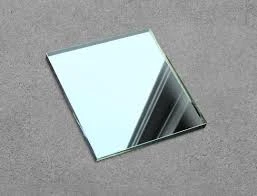

Low Emittance Glass The Future of Energy Efficiency
In an era where energy conservation and sustainability are paramount, materials that enhance efficiency while reducing environmental impact have gained immense importance. One such innovative material is low emittance glass, commonly referred to as low-E glass. This specialized glass offers a range of benefits that make it an ideal choice for modern construction and renovation projects, aiming to increase energy efficiency and comfort in buildings.
Understanding Low Emittance Glass
Low emittance glass is designed to minimize the amount of infrared and ultraviolet radiation that passes through it without compromising the amount of visible light transmitted. This is achieved through a microscopically thin coating, typically made from metallic oxides, applied to one or more surfaces of the glass. The coating acts as a barrier, reflecting heat back into the interior of a building during the colder months while allowing visible light to enter. Conversely, during warmer months, it reflects exterior heat, keeping indoor spaces cooler.
In simple terms, low-E glass helps maintain a stable indoor climate, reducing the reliance on heating and cooling systems throughout the year. This ability to manage solar heat gain efficiently makes low emittance glass a versatile and beneficial material for both commercial and residential applications.
Energy Efficiency and Environmental Impact
The primary advantage of low-emittance glass is its contribution to energy efficiency. By significantly reducing the need for artificial heating and cooling, buildings equipped with low-E glass can lead to substantial energy savings. Studies show that homes using low-E glass can reduce energy consumption by up to 30-50%, depending on the climate and other factors.

This reduction in energy usage not only lowers utility bills for homeowners and businesses but also diminishes the overall carbon footprint of a building. With increasing awareness of climate change and the need for sustainable building practices, implementing low-emittance glass is a proactive step toward adopting an eco-friendly lifestyle.
Enhanced Comfort and Aesthetics
Beyond its energy-saving features, low-emittance glass also enhances the comfort and aesthetic appeal of buildings. It minimizes temperature fluctuations and cold drafts that can occur near traditional windows, creating a more stable and pleasant environment indoors. Furthermore, because it allows for higher levels of natural light while controlling heat gain, spaces filled with low-E glass remain bright and visually inviting without the discomfort associated with excessive heat.
In terms of aesthetic appeal, low-E glass is available in various tints and finishes, allowing architects and designers the flexibility to match the glass to any design concept. This adaptability makes low-E glass not only functional but also a stylish choice for modern architecture.
Conclusion
As the demand for energy-efficient building materials continues to rise, low emittance glass stands out as a transformative solution that aligns with the principles of sustainability and comfort. Its ability to reduce energy consumption, enhance occupant comfort, and provide stylistic flexibility makes it an appealing option for a wide range of applications.
Investing in low-E glass not only benefits individual homeowners and businesses through lower energy bills and improved comfort but also contributes to broader environmental goals by reducing carbon emissions. As we move towards a more sustainable future, incorporating low-emittance glass into building designs will play a pivotal role in creating energy-efficient spaces that reflect a commitment to environmental stewardship and innovation. The time for adopting low-E glass is now, as it represents both an immediate benefit and a long-term solution in our quest for sustainability.